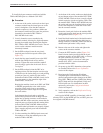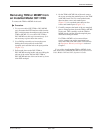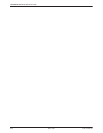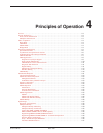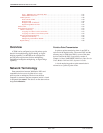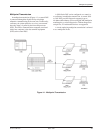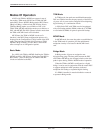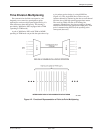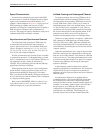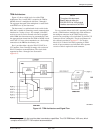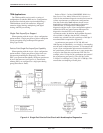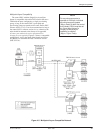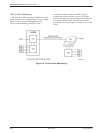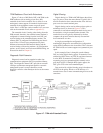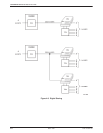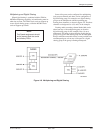
COMSPHERE 3600 Series Data Service Units
4-6 March 1999 3610-A2-GB41-60
Speed Characteristics
In time division multiplexing, the speed of the DDS
line must equal or exceed the combined speeds of digital
signals to be transmitted at each DTE interface. For
example, if the multiplexer in Figure 4-2 has five pairs of
DTEs operating at 9.6 kbps and one pair of DTEs
operating at 4.8 kbps for a combined speed of 52.8 kbps, a
DDS line speed of 56 kbps could accommodate all
six pairs. The portion of capacity dedicated to each pair of
communicating DTEs constitutes a channel.
Asynchronous and Synchronous Sources
The 3600 Series DSU operating in TDM mode can
accommodate both asynchronous and synchronous
sources. Speeds of the two or six individual TDM ports
(Ports 1 through 6) can be set to 1.2, 2, 2.4, 4, 4.4, 4.8,
7.2, 8.4, 9.2, 9.6, 12, 14.4, 16.8, 18, 18.8, 19.2, 28.8, 32,
38.4, 48, 56, and 64 kbps full-duplex.
Possible asynchronous rates include all rates available
to synchronous operation (1.2 through 64 kbps, as stated
above). Asynchronous rates of 150, 300 and 1200 bps are
also supported, but they require the allocation of
1200 bps. The asynchronous speed of 600 and 1800 bps
requires the allocation of 2400 bps.
When operating with the Async!Sync configuration
option enabled, a single-port point-to-point circuit can
operate using nondisruptive diagnostics. The control
DSU’s port speed and the tributary DTE port speeds must
be set to the same rate with the tributary DSUs configured
as a single port-sharing group.
Refer to the COMSPHERE 3600 Series Data Service
Units, Model 3610 and 3611, Operator’s Guide for the
additional single-port async/sync information.
In-Band Framing and Underspeed Channel
For proper operation, the receiving TDM must be in
synchronization with the transmitting TDM. To ensure
synchronization, the transmitting TDM adds an extra bit
to each TDM frame, called a framing bit, to create an
identifiable pattern of bits over multiple frames. A frame
is a block of data that is transmitted as a unit. Thus, to
synchronize, the receiving TDM compares the incoming
bit of each frame position to the expected pattern. If the
pattern does not match, successive bit positions are
searched until the pattern persists over multiple frames.
When two or more channels are required, a 3600 Series
DSU operating in TDM mode uses a framing scheme
called in-band framing (IBF). When the combined data
rate of the communicating DTE is less than the data rate
of the DDS line, the framing bits are inserted into the idle
(unused) capacity.
When the combined data rate is equal to the rate of the
DDS line, framing bits are implemented by reducing the
data rate of one of the channels. This channel is called the
underspeed channel. The underspeed channel runs 10 bits
per second less than the channel’s set speed. For example,
a channel set to 9600 bps and running at underspeed
operates at 9590 bps.
In-band framing cannot be taken from a channel
supporting asynchronous communication. This restriction
requires that if all ports are assigned to asynchronous
operation, the sum of the port speeds must be less than the
DDS line speed.
If nondisruptive diagnostics are enabled and the
combined data rate is equal to the DDS line speed, then
the underspeed port runs at the configured port speed
minus the in-band secondary channel transport speed. For
example, if a secondary channel speed is set to 400 bps,
the port speed is set to 9600 bps, and the port is
configured for Underspeed, the port speed will
automatically run at 9200 bps. The framing bits are
included as part of the secondary channel bandwidth.



